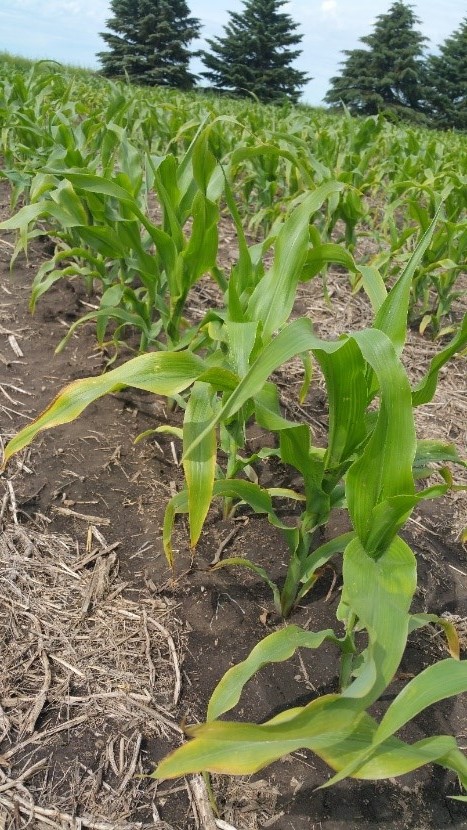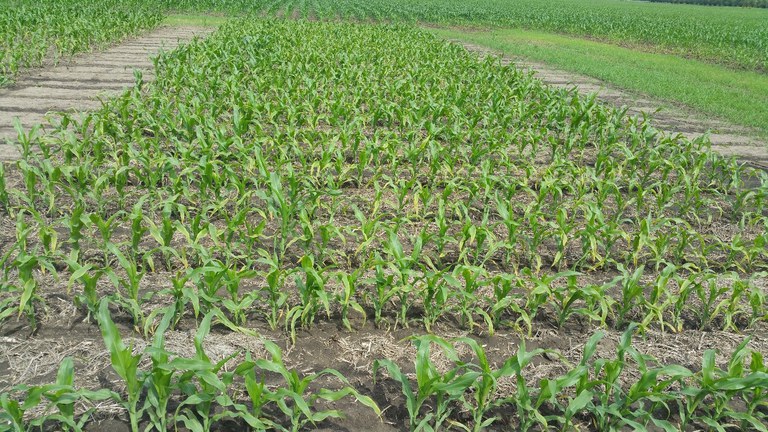Potassium Deficiencies in the Corn Fields: Are There Late Remedies?
Until recently, potassium (K) deficiencies had been less prevalent for most ND farming areas; corn response to K fertilization has predictably been low because of adequate K availability (usually >150 ppm soil test) versus zones that because of their clay chemistry, are predicted to be more responsive to K (with critical level > 200 ppm https://www.ag.ndsu.edu/publications/crops/north-dakota-clay-mineralogy-impacts-crop-potassium-nutrition-and-tillage-systems).
What is happening this year that is causing areas of fields that have rarely before shown K deficiency for corn to now seemingly be low in available K?
It is not uncommon for soil K test levels to vary within fields; thus there may be some K deficient areas within a field whose average soil K test level was adequate. In the future, sampling by zone within a field will help to identify areas of particular K need.
Potassium deficiency symptoms will show up when K is low, for prolonged wet soils, dry soils, and in shallow topsoil. When drought occurs (low availability of soil moisture) in the topsoil when corn has attained V6 to about knee high (Fig 1), and demand for K starts increasing rapidly, is a period where K deficiency is most likely to appear. The crop is likely to begin losing its yield potential.

Figure 1. Close-up of K deficient corn. Note the lower leaves are most affected with yellowing on leaf margins with mid-rib remaining green the longest.
Symptoms are first seen on older (lower) leaves, where K first gets depleted as it is transported to younger leaves, showing yellow coloration and browning (drying) of leaf margins. In severe cases, younger leaves will show symptoms as well, and plants are evidently stunted.
Is there a remedy for K deficiency after symptoms are detected?
The crop often regains its green appearance with the development of new leaves, as conditions for K availability eventually improve with improved accessibility to K from fertilizer application, more developed roots, or improved soil moisture. However, corrective attempts by broadcasting (potash) or dribbling K (thiosulfate) will help regain most of the yield potential.
The recommended rate is 100 lbs of potash, 0-0-60 (60 pounds K2O per acre).
It is important to soil sample and analyze K for affected and non-affected areas to help determine the future course of action, whether to adjust future K fertilization rates, and if necessary, the method of application. Ear leaf sampling at the onset of silking is also suggested to verify if K content is within the sufficiency range used by the state soil testing lab.
Potassium deficiency in corn was also recently addressed, in brief, in the July 11 North Dakota State University Crop and Pest Report: https://www.ag.ndsu.edu/cpr/soils/potassium-deficiency-in-season-diagnosis-and-correction-in-corn-07-11-19.

Figure 2. Shortage of rainfall is likely a cause for low K availability. A dry spell during which rainfall was over 40% below normal for about 7 days before 1 inch of rainfall at the Carrington Research Extension Center.
Jasper M. Teboh, Ph.D.
Research Soil Scientist
Jasper.Teboh@ndsu.edu


